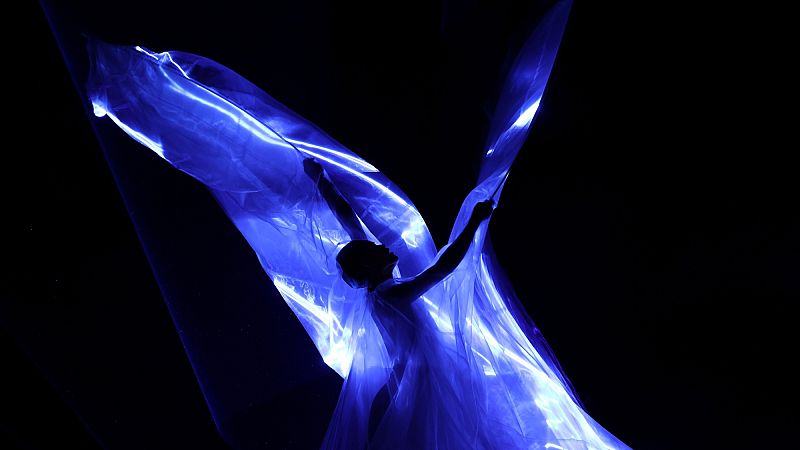A New Era of Fashion: Iris Van Herpen’s Vision at Paris Couture Week
At the recent Paris Couture Week, Iris Van Herpen captivated the fashion world with a groundbreaking creation—a glowing “living dress” that pulsed with bioluminescent algae. This striking piece served as the centerpiece of her latest collection titled Sympoiesis, marking a bold step into the future of fashion.
The dress was encased in a custom nutrient matrix designed to sustain the algae, allowing it to shimmer in electric blue hues. This innovative use of living organisms redefined the boundaries between nature and high fashion, creating a visual spectacle that blurred the line between an organism and couture. The design not only showcased artistic brilliance but also highlighted the potential for sustainable materials to play a central role in the fashion industry.
Van Herpen continued to push the envelope by introducing wedding gowns made from lab-grown bio-protein. These gowns were crafted using a futuristic Japanese fiber known for its biodegradable and endlessly recyclable properties. This development represents a significant shift towards eco-conscious fashion, offering a glimpse into what the industry might look like in the coming years. By integrating advanced biotechnology with traditional craftsmanship, Van Herpen is paving the way for a more sustainable and innovative approach to fashion design.
To further immerse the audience in the experience, Van Herpen collaborated with renowned master perfumer Francis Kurkdjian. Together, they created a bespoke fragrance tailored to complement the collection. This unique scent was released in waves throughout the venue during the show, enhancing the sensory impact of the presentation. The combination of visual artistry, technological innovation, and olfactory elements created a multi-dimensional experience that left a lasting impression on attendees.
Innovations in Material Science
The use of lab-grown bio-protein and bioluminescent algae underscores a growing trend in the fashion industry: the integration of material science and sustainability. These materials are not only environmentally friendly but also offer new possibilities for design and functionality. For instance, bio-protein fibers can be engineered to have specific textures and properties, while bioluminescent elements add a dynamic and interactive aspect to clothing.
This approach challenges traditional notions of what fashion can be. Instead of focusing solely on aesthetics, designers are now considering the environmental impact of their creations. The result is a movement toward more responsible and forward-thinking practices within the industry.
The Role of Collaboration
Van Herpen’s work exemplifies the power of collaboration across disciplines. By working with experts in perfumery, biotechnology, and material science, she has been able to create something truly unique. This interdisciplinary approach not only enriches the creative process but also opens up new avenues for innovation. It highlights the importance of teamwork in pushing the boundaries of what is possible in fashion.
Looking Ahead
As the fashion industry continues to evolve, the influence of designers like Iris Van Herpen will become increasingly significant. Their work not only inspires but also sets a precedent for future generations of creators. By embracing cutting-edge technology and sustainable practices, they are helping to shape a more conscious and imaginative approach to fashion.
In conclusion, Van Herpen’s Sympoiesis collection represents a transformative moment in the world of haute couture. Through the use of bioluminescent algae, lab-grown materials, and collaborative creativity, she has reimagined what fashion can achieve. This vision of the future is not just about looking good—it’s about making a meaningful impact on the world.







